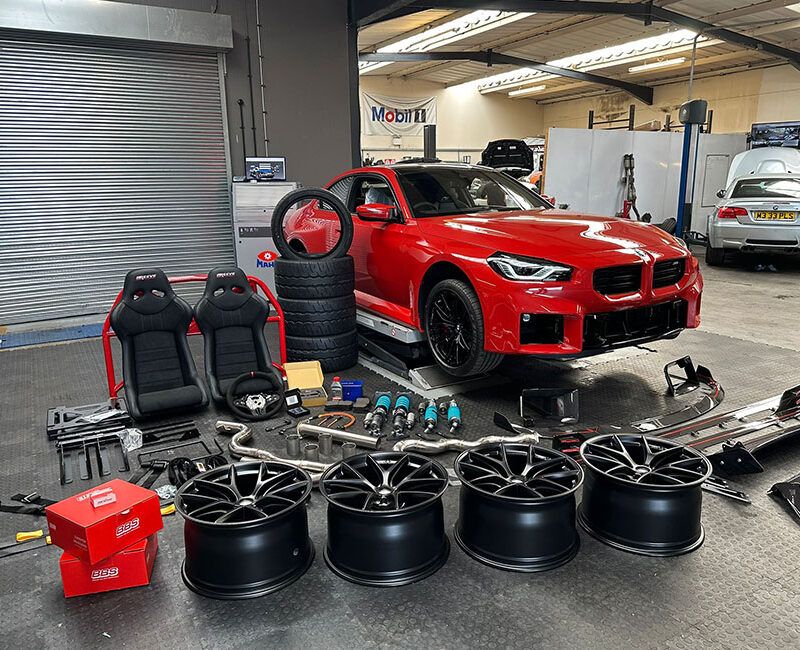Balancing Reliability and Performance in Track Car Builds
Creating a track car that perfectly balances reliability and performance is an art. In the world of motorsports, pushing for higher performance often comes at the expense of reliability. However, a well-thought-out build can achieve a harmonious balance, ensuring that your track days are both exhilarating and free from unwelcome breakdowns. This article provides insights into how you can strike this delicate balance in your track car build.
Understanding the Interplay between Reliability and Performance
Performance in a track car typically means more power, better handling, and improved braking. However, each of these enhancements can put additional strain on the car’s components, potentially compromising reliability. The challenge is to upgrade your car in a way that improves performance while maintaining, or even enhancing its reliability.
Engine Tuning: Power vs. Longevity
- Conservative Tuning: While aggressive tuning can yield significant power gains, it can also overstress the engine. Opt for a conservative tune that offers a safe increase in power without pushing the engine beyond its limits.
- Quality Components: Invest in high-quality engine components that can withstand increased performance demands. Forged internals, for instance, can handle higher pressures and temperatures better than stock parts.
- Cooling System Upgrades: High performance generates more heat. Upgraded radiators, oil coolers, and better ventilation can help maintain optimal engine temperatures.
Suspension and Brakes: Enhancing Performance Safely
- Suspension: Upgrade to performance-oriented suspension components that are durable and adjustable. This allows for fine-tuning handling characteristics without compromising the suspension’s integrity.
- Brakes: High-performance brake pads, rotors, and fluid are essential for track cars but choose products that offer durability as well as improved stopping power.
Balancing Weight Reduction and Structural Integrity
- Strategic Weight Reduction: While removing weight can improve performance, it’s important not to compromise the car’s structural integrity. Focus on removing non-essential components while retaining the strength of the chassis.
- Reinforcements: In some cases, reinforcing the chassis, such as with a roll cage, can improve both the safety and the rigidity of the car.
Regular Maintenance and Inspections
- Preventive Maintenance: Regular maintenance is key to reliability. This includes frequent checks and replacements of fluids, brakes, tyres, and other wear items.
- Post-Track Inspections: After every track day, thoroughly inspect your car for any signs of wear or damage.
Electing for Quality over Quantity in Modifications
- Choose Quality Parts: It’s better to invest in a few high-quality modifications than to go for many cheaper, less reliable upgrades.
- Professional Advice and Installation: Utilize the knowledge and skills of professionals for advice on modifications and their installation.
Real-World Testing and Adjustments
- Track Testing: Regularly test your car on the track to understand how modifications affect performance and reliability.
- Data Collection: Use data logging to monitor the car’s performance and identify any potential issues before they lead to failures.
FAQs for Balancing Reliability and Performance
Q: How much power increase is safe for my track car? A: This largely depends on the base engine. Consult with a reputable tuner who understands the limits of your specific engine.
Q: Can aftermarket modifications improve reliability? A: Yes, many aftermarket parts are designed to enhance performance while being more durable than stock parts.
Q: How often should I perform maintenance on my track car? A: This depends on usage and the type of track events. As a rule of thumb, more frequent maintenance is required for track cars compared to street cars.
Q: Should I prioritize reliability over performance? A: For most enthusiasts, a balance is ideal. However, if you’re new to track days, focusing on reliability first can provide more consistent track time and a better learning experience.
Q: Are there any specific brands or types of parts you recommend for reliability? A: It varies by car and intended use. Research and seek recommendations from experienced track drivers with similar vehicles.
In summary, balancing reliability and performance in a track car build requires a thoughtful approach to modifications, a focus on quality, and diligent maintenance. It’s about making smart choices that enhance the car’s capabilities while keeping it robust enough to withstand the rigours of track driving. Remember, a reliable track car provides more time on the circuit and a better overall driving experience.

